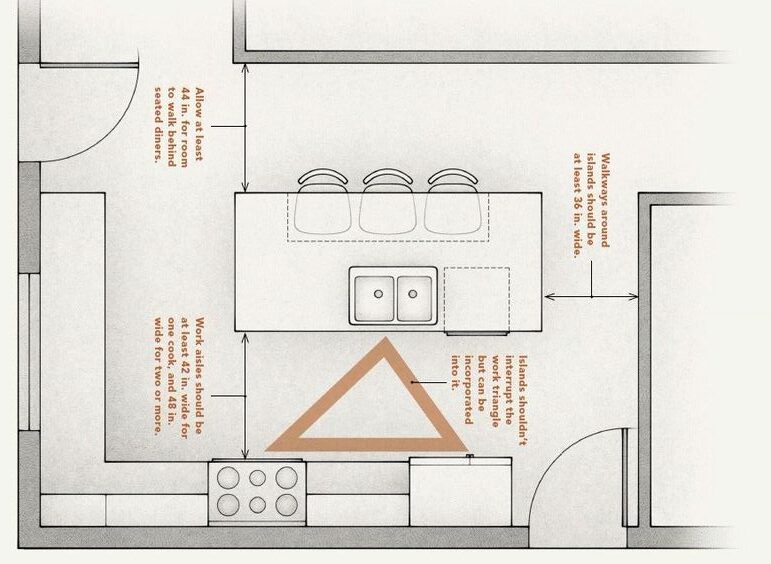The kitchen work triangle arranges the three main zones closely to enhance workflow efficiency.

What is the Kitchen Work Triangle?
The kitchen work triangle optimizes workflow efficiency by positioning the three primary zones close together, minimizing distances for seamless movement during cooking, food prep, and cleanup.
Key Components of the Kitchen Work Triangle:
- StoveCooktop: This area represents the cooking zone, where most food preparation takes place. It should be centrally located within the kitchen, making it easily accessible to other zones.
- Sink: This is where dishes get washed, ingredients are rinsed, and food preparation happens. It should be located near the cooking area to facilitate the transfer of ingredients and utensils between the two zones.
- Refrigerator: This is where perishable food items, like fresh produce, dairy products, and meats, are stored. It should be located close to both the cooking and sink areas for convenient access to ingredients while cooking.
Principles of Effective Kitchen Work Triangle Design:
- Ideal Spacing: The perfect distance between each element of the kitchen work triangle shouldn’t be too close or too far. The total distance should be approximately 12 to 26 feet, with none of the triangle’s sides exceeding 9 feet.
- Unobstructed Pathways: Ensure clear pathways between the cooking, sink, and refrigerator zones to minimize congestion and potential hazards.
- Avoid placing obstacles such as islands or large furniture in the middle of these pathways. Additionally, ensure clear pathways to facilitate seamless movement between kitchen zones.
- Efficient Workflow: Arrange the kitchen layout so that chefs can easily navigate between the cooking, cleaning, and storage areas without unnecessary detours. Consequently, this will help save time and effort during food preparation and cooking.
- Customization: While traditional triangular planning works well for many kitchens, it’s essential to customize the design to suit your own needs and preferences. For instance, consider factors such as the size and shape of your kitchen, your cooking habits, and the number of people using the space.
“Don’t miss the chance to discover everything you need to design your dream kitchen! Watch the video now for essential guidance and inspiring ideas to transform your kitchen into a space that perfectly suits your needs and style.”





